
The new digital brand training at imc Learning: Understanding through experiencing
Using gamified brand training to reach and lastingly inspire a highly diverse target audience

In business it’s generally a good idea to stick with what you do best. And that’s precisely our approach to internal brand training here at imc Learning. We have taken our expertise in learning, something we normally offer other companies, and used it to help our own employees.
At imc, we’ve been working with digital learning for about 25 years. We strive to make learning better by redefining how learning happens. Experts in technology, e-learning content and strategy work hand in hand to offer holistic and tailored e-learning solutions – worldwide.
Having started out as a spin-off from Saarland University in Germany, we now work with more than 1,300 companies and public and educational institutions from all sectors and of all sizes, providing them with holistic support in the planning and implementation of digital training strategies.
Enabling employees worldwide to understand and engage with our values and purpose amid the demands of hybrid work and new onboarding methods
imc has changed a lot over the years, both in terms of our brand image and the core values on which it is built. This change in culture is reflected in all areas of our company and therefore needs to be understood and actively supported by all employees – including new hires, who need to be able to connect with and internalize our values.
Achieving this outcome requires learning in the following main areas:
- Company history: What defines us as a company? Where do we come from?
- What are imc’s goals and vision?
- What are the values that shape us, and how do we communicate those values?
- What is our business purpose, and what can each and every employee do to further that purpose?
- What does the imc brand feel like?
We needed a learning solution that could both impart this knowledge to all new hires right from day one and make it available to all existing imc employees on an ongoing basis. The obvious approach was to create an interactive, digital training course that was fun while still getting the imc brand and culture across.
The challenge in designing the course was not just to find a way of disseminating the informational aspects of the training content. The main challenge, in fact, was to give the content emotional power and authenticity, but without overdoing it, so that the very diverse target audience here at imc could identify with it.

A brand experience that invites engagement using a dedicated mascot
No sooner said than done. Kerstin Steffen, Director Brand Strategy at imc, initiated the training course and helped with its implementation. Teaming up with experts from our Content department – people who normally create digital learning content of this type for external clients – she set her sights on developing a training course that inspires all imc employees.
“It was extremely important to develop something that did more than merely disseminate information,” she recalls. “People need to be able to understand and ‘feel’ the brand. New employees should be able to instantly understand what drives us here at imc, what our values are, and what kind of cooperation and collaboration we practise and expect of others.”
Oliver Steinhilber is an instructional designer at imc and provided support for the conceptual design of the training course. “We’re currently seeing strong demand for training courses of this type among our clients,” he says. “Onboarding, change, new work and the like are a big deal at the moment, and managers in HR, marketing and internal communication are looking for ways of communicating these messages with authenticity and emotional power.”
So, it was immediately obvious what we needed to do. But we had to make a number of key decisions before we could start with the conceptual design and creation work.

Excitement and engagement among newcomers and old hands alike
The first step was to select a suitable tool for creating the training course. We chose Articulate Rise, and the team undertook two in-house workshops on how to use it.
Next, the team agreed to use storytelling as the course’s definitive stylistic device and to adopt a mascot as the narrator and companion for learners on their learning journey. Max – that’s the mascot’s name – looks a little like a ghost and emerges from the dot on the “i” of imc. He starts out very pale but gradually takes on more colour as the learner progresses through the course and learns more about the imc brand.
Max features in all elements of the training course. For example, in the history section, he reads from a book telling the story of the company’s founder, Professor August-Wilhelm Scheer. As the training course progresses, Max draws the learner deeper and deeper into the imc brand experience. The course also includes quizzes at regular intervals to gauge comprehension of the learning content.

The result is an entertaining and explorative 25-minute training course, split into four chapters, that teaches the learner everything they need to know about imc.
“We’re really pleased with the result, and the initial feedback from users is extremely positive,” says Kerstin Steffen. “The newcomers are engaging enthusiastically, plus it has sparked the interest of the old hands, who feel inspired to do the course right away. The time invested – it took about three months from initial idea to implementation – has well and truly paid off!”

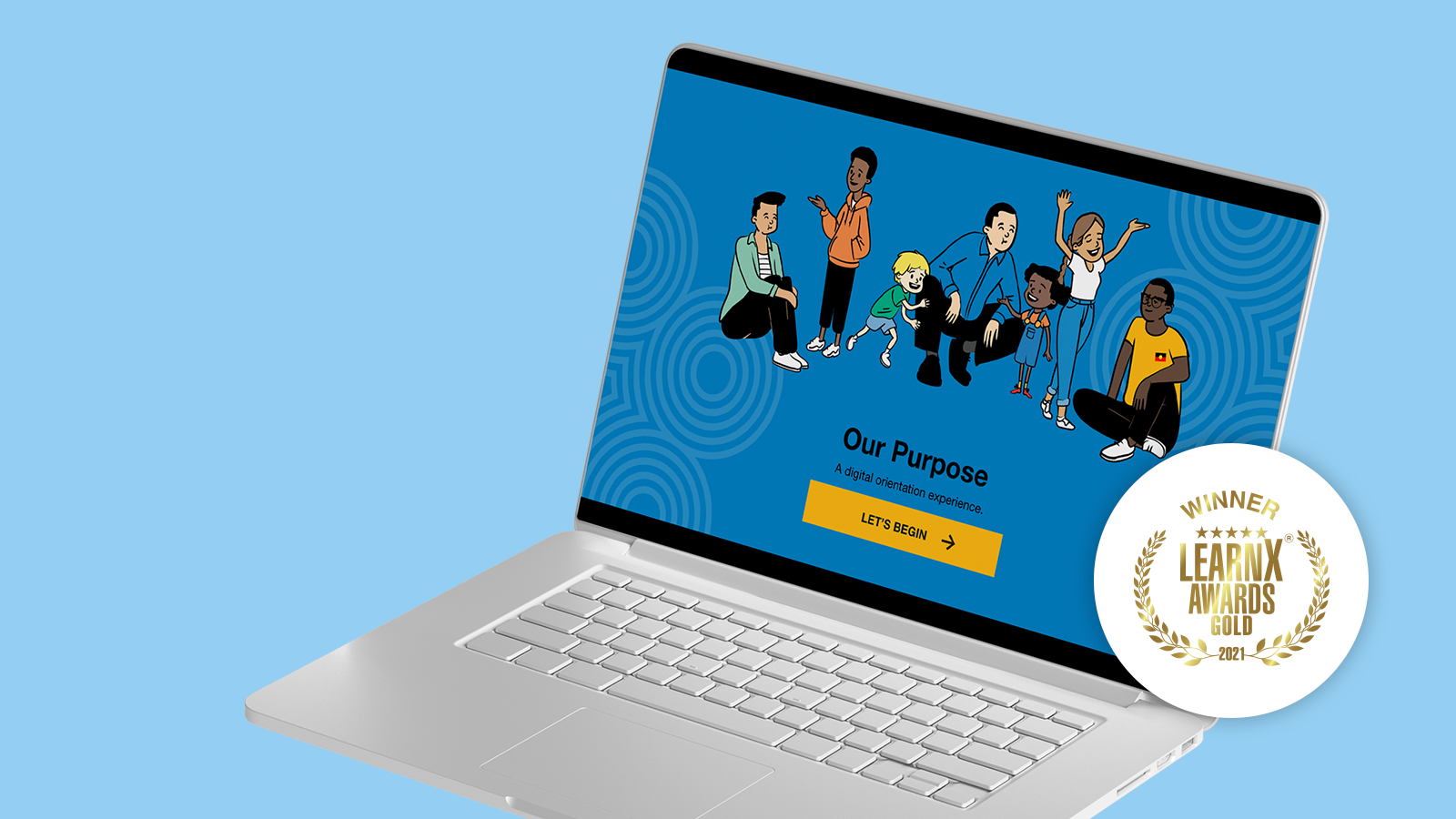
Creating a Better Employee Experience

The Commission for Children and Young People (CCYP) is an independent statutory body that promotes improvement in policies and practices affecting the safety and wellbeing of children and young people in the state of Victoria, Australia.

THE BACKGROUND
Using a human-centred design approach
The CCYP desired to create a better orientation and overall employee experience for their people.
To do this, we implemented a human-centred design approach in the new hire program across its organisation.
The solution of human-centred design enables us to consider the people that we’re designing for.
So putting people at the centre is the core of everything we do.
Creating a huge disruption to the current approach
CCYP strived to make the new starter and employee experience enjoyable, nevertheless, the reality was that new starters were handed 60 pdf documents when joining and sent on their way, leaving everything to chance. Our intervention was focused on disrupting this in a big way.
For CCYP, 'experience' was defined as “an event or occurrence which leaves an impression on someone” or a “feeling and emotion”. Employee experience, much like customer experience, is the deliberate and intentional design of systems and processes that create better human outcomes.
In the context of CCYP, Employee experience is the way new starters feel and the impression that’s made on them when they join the organisation.

Considering the people we are designing for
This project was developed with a Human-Centred Design approach.
Human-Centred Design is a way of working and being that exists beyond a project or methodology. The world around us is changing rapidly, and the human-centric approach prepares us to deal with uncertainty and ambiguity.
Using Human-Centred Design methods helps us to understand human values and latent needs, so we are able to create people experiences that are meaningful and resilient.
Through this approach, we were able to shape a workplace experience where people want to be, one that responds understands, and values the perspectives and needs of those we aim to empower.
Delivered on time and on budget
This project delivered on what it set out to do on both time and budget.
Not only did we meet our original objectives, but imc successfully managed to implement the majority of strategic findings throughout the organisation.
After we delivered the initial concept, imc developed a 20-minute orientation module, implemented our innovative Trello solution as induction hubs, and further refined the organisations perspective on learning-centred employee experience for the future.
imc and CCYP were recognised as Gold winners at the 2021 LearnX awards, in the category Best Talent Strategy: Employee Experience. The international award program honours innovative and creative projects in the fields of learning and design every year.
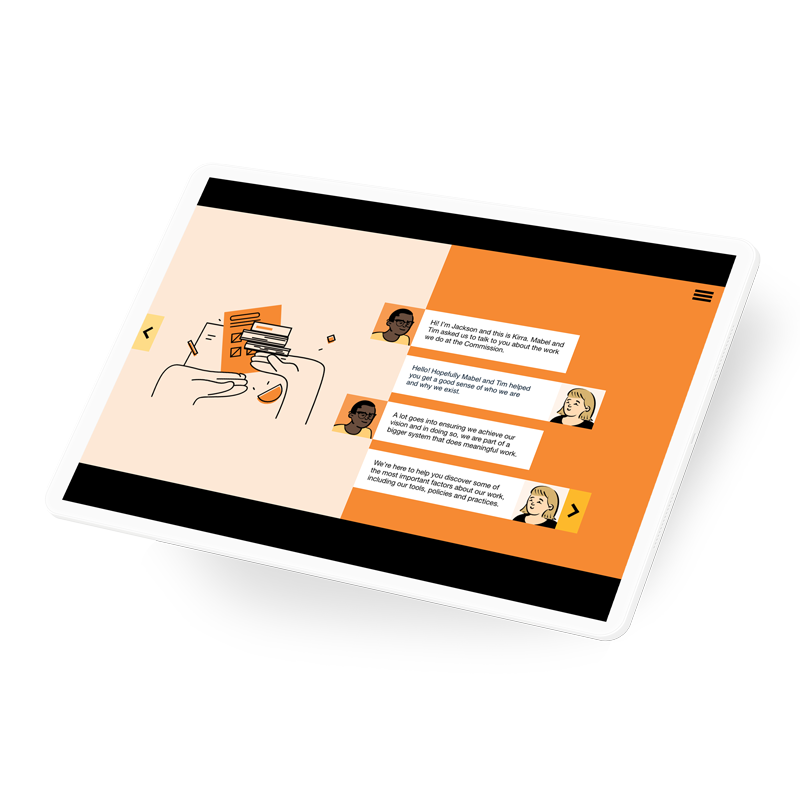
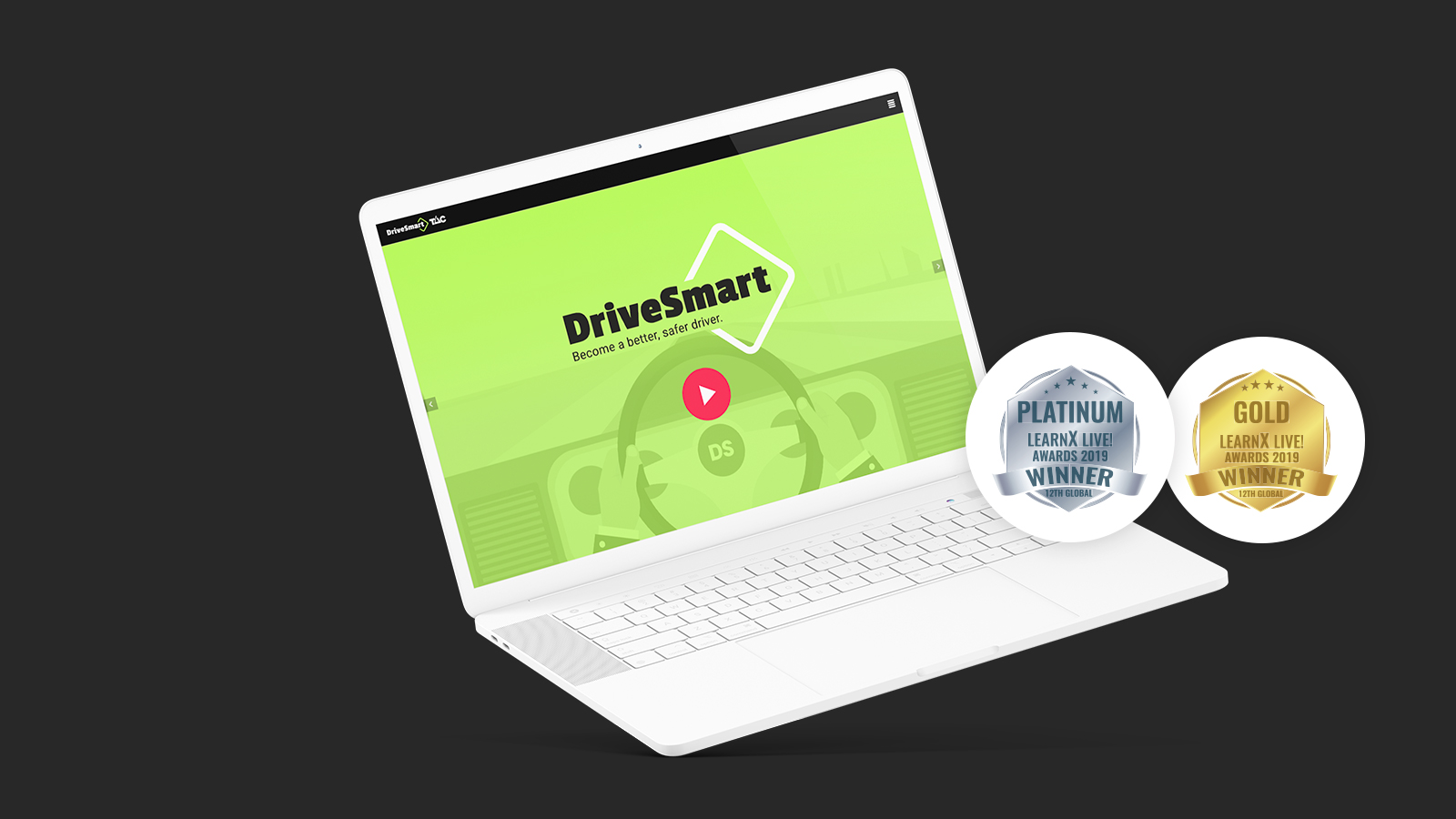
Delivering an impactful driving experience

The Transport Accident Commission (TAC) is a Victorian Government-owned organisation whose role is to promote road safety, support those who have been injured on Victorian roads and help them get their lives back on track.

THE BACKGROUND
An ageing program that was failing to engage its audience
In the 1990’s, the TAC launched DriveSmart, a computer-based simulation training tool designed to support learner drivers develop skills for safe driving.
The program was originally delivered on CD-ROM, and then transitioned to an online resource in 2014. However, as the program aged, so too did its effectiveness in engaging an audience that had grown up in the age of gaming.
Even though the research within the program withstood the test of time, the tool was now outdated for a Gen Z audience who have come to expect a good user experience, interactivity, and mobile accessibility, which are necessary factors to deliver an impactful learning experience for this up-and-coming generation.
Rebuilding content from the ground-up
The major challenge of the project was to build a new system that was primarily aimed at a Gen Z audience. Therefore, the platform had to be fully mobile-optimised, with intuitive UI, a custom interface, and be accessible to all participants.
To effectively connect with the intended audience, the development of new content had to include realistic learning scenarios, gamification elements, interactivity and feedback and had to be embedded in research.

A portal with media-rich content
Our solution was the implementation of the imc Learning Suite, as the front end portal (website) for the TAC.
This portal was combined with a mobile-first interactive video format which was designed in a way that was easy-to-use, playful and mobile-optimised.
There were gamification elements included within the development of content such as badges, storytelling and driving games which enabled the learner drivers to build up their driving knowledge. They also had the ability to share badges on social media to share the safe driving message with their peers.
New video footage of driving conditions and risks were filmed for the scenarios. The videos were to be adapted into interactive scenarios by imc. These scenarios were designed to resonate with real-world examples that a young driver might experience whilst driving and be exposed to common dangers on the road.
A successful transition to mobile-first
The project was delivered on time, on budget and in its initial launch phase in March 2019, where over 8,000 users had been onboarded.
The successful redesign of the DriveSmart program has resulted in management who are very satisfied with the modernisation of the website and the mobile-first platform.
There has been a lot of positive word of mouth from the program’s users. The consensus within the community is that the bright colours and design of the website are very engaging, and it seems that users are more open to absorbing the information because of the way that the scenarios have been designed.
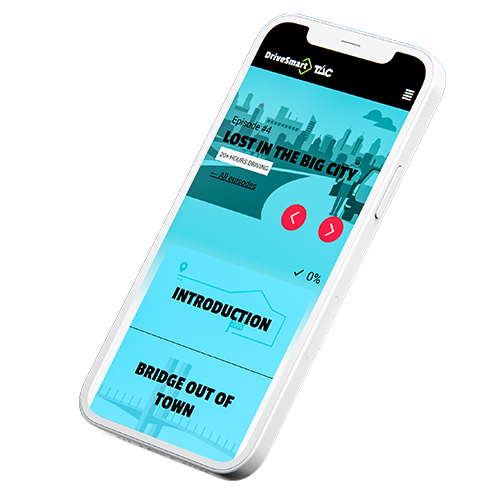
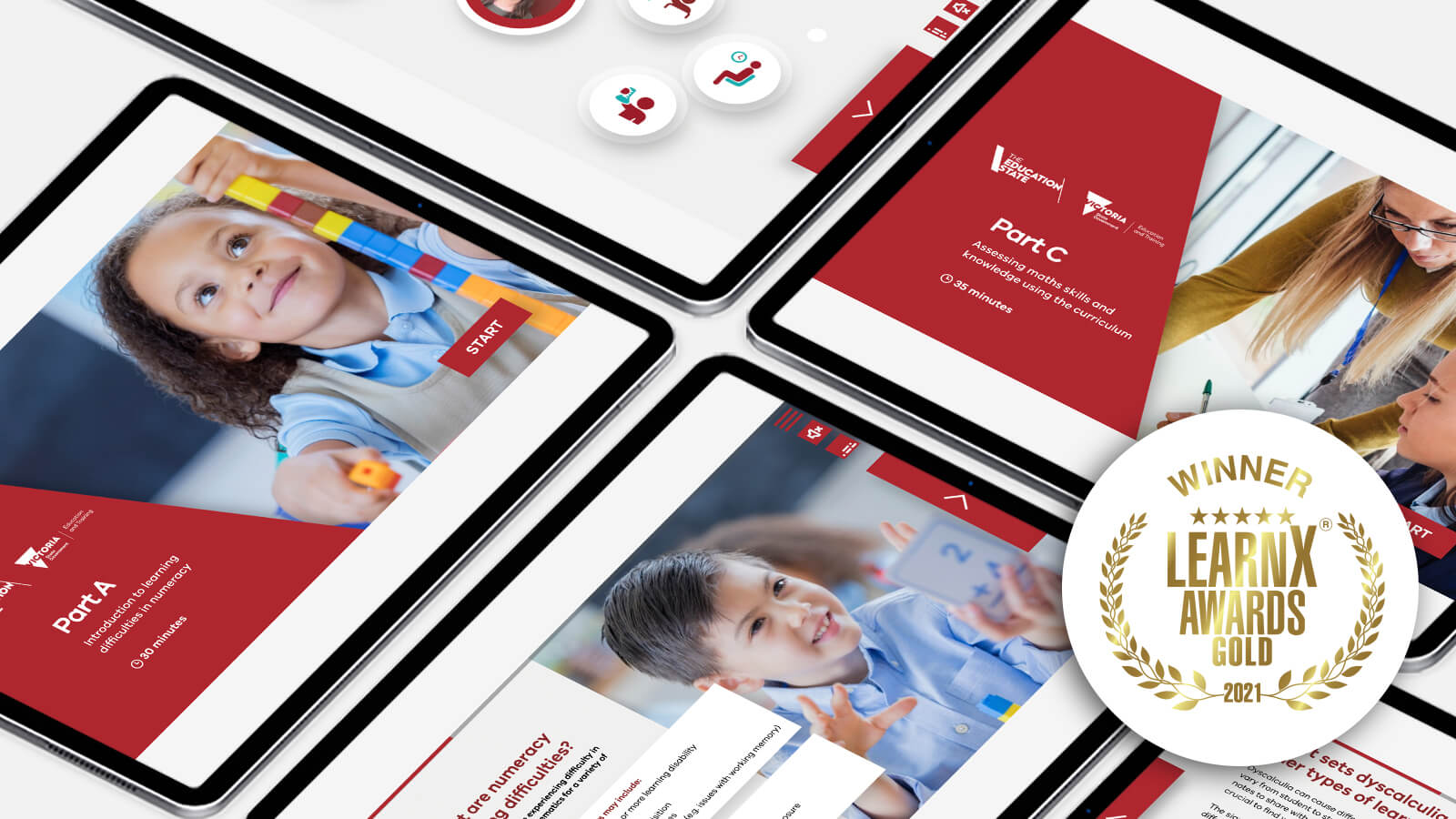
(State of Victoria)
Building teachers’ capability through e-learning

The Department of Education and Training (the Department) offers learning and development support and services for anyone living in the state of Victoria, Australia. The Department is responsible for the state’s education system.

BACKGROUND
Enabling teachers to build the numeracy skills of their students
With this in mind, imc Australia partnered with the Department for the development of e-learning to build the confidence and capability of Victorian teachers to support students with learning difficulties in numeracy.
E-learning modules were developed to cover an introduction to learning difficulties in numeracy. These modules acknowledged the signs of numeracy learning difficulties, assessed mathematical skills and knowledge using the curriculum and supported students with numeracy learning difficulties in the classroom.
Difficulty in numeracy and mathematics
Students in the classroom may be experiencing difficulty with numeracy for a variety of reasons. It could be because of the presence of one more learning disability, absenteeism, sensory impairment or delayed language acquisition. Other factors include: social-emotional difficulties, issues with working memory, limited early language and literacy exposure, lower socio-economic status and disrupted learning.

Building comprehensive E-Learning modules to support Victorian teachers
imc built four online training modules using an industry standard commercial authoring tool. This tool follows a simple, linear structure and utilises a mixture of custom graphics, stock images and text on screen, with the inclusion of multimedia assets developed and provided in support by the Department.
imc provided guidance and recommendations to the Department. We also provided extensive support within the customer's Learning Management System (LMS), including survey design, data capture, reporting and coaching on how to maintain modules effectively.
Ultimately imc's final recommendation was integrating and embedding a web object by Google Forms within the solution. Survey data and reports are extracted outside the modules and shared with the Department.
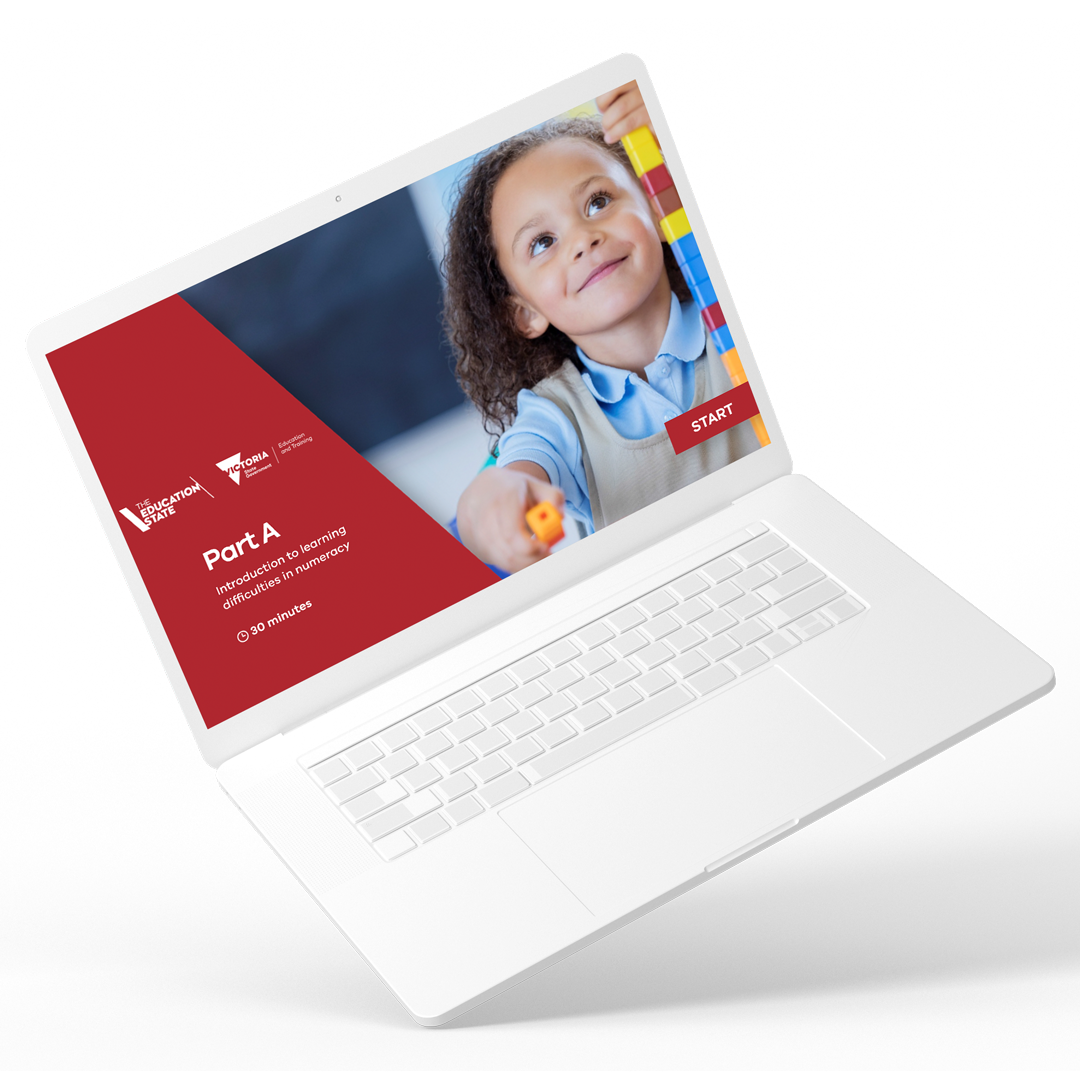
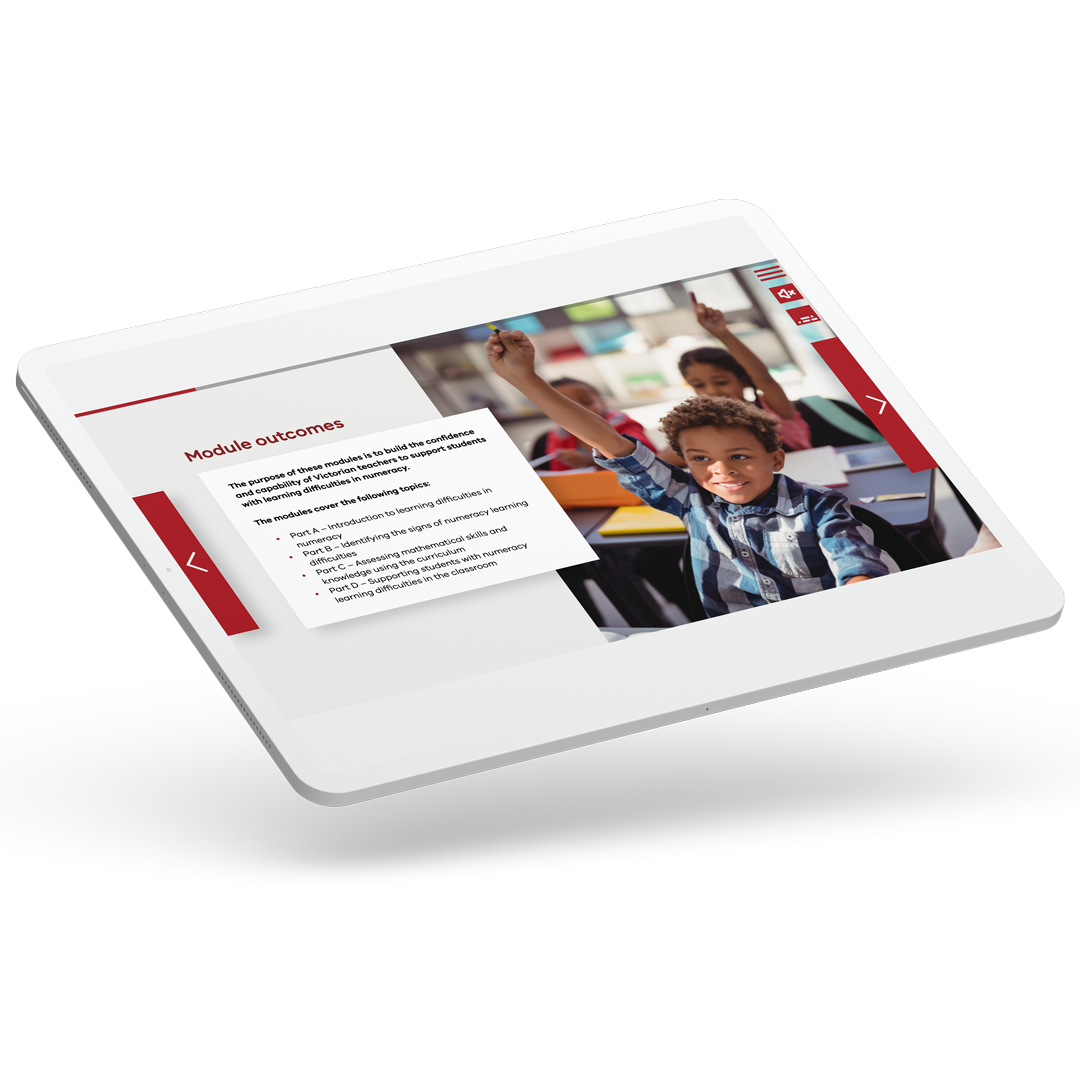
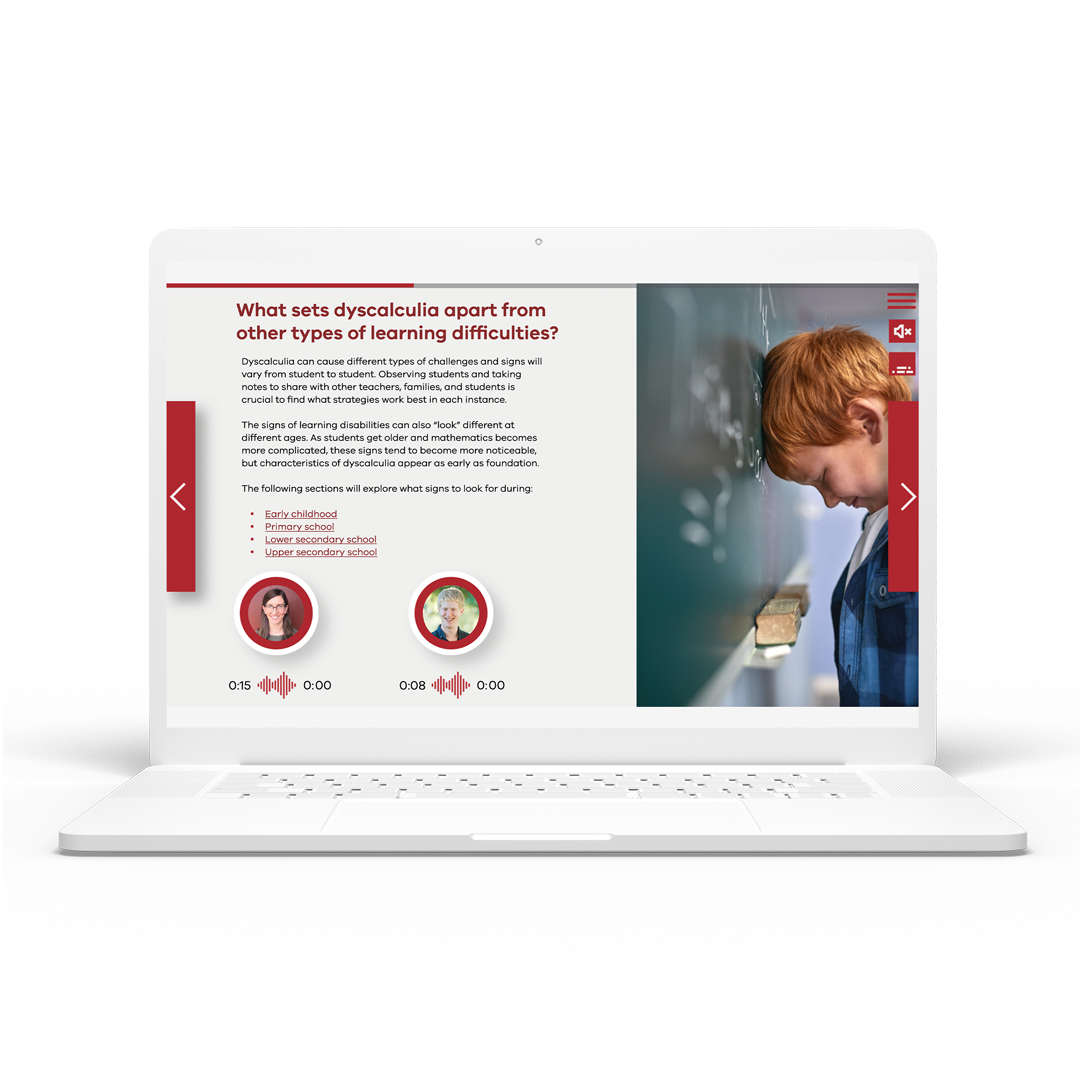
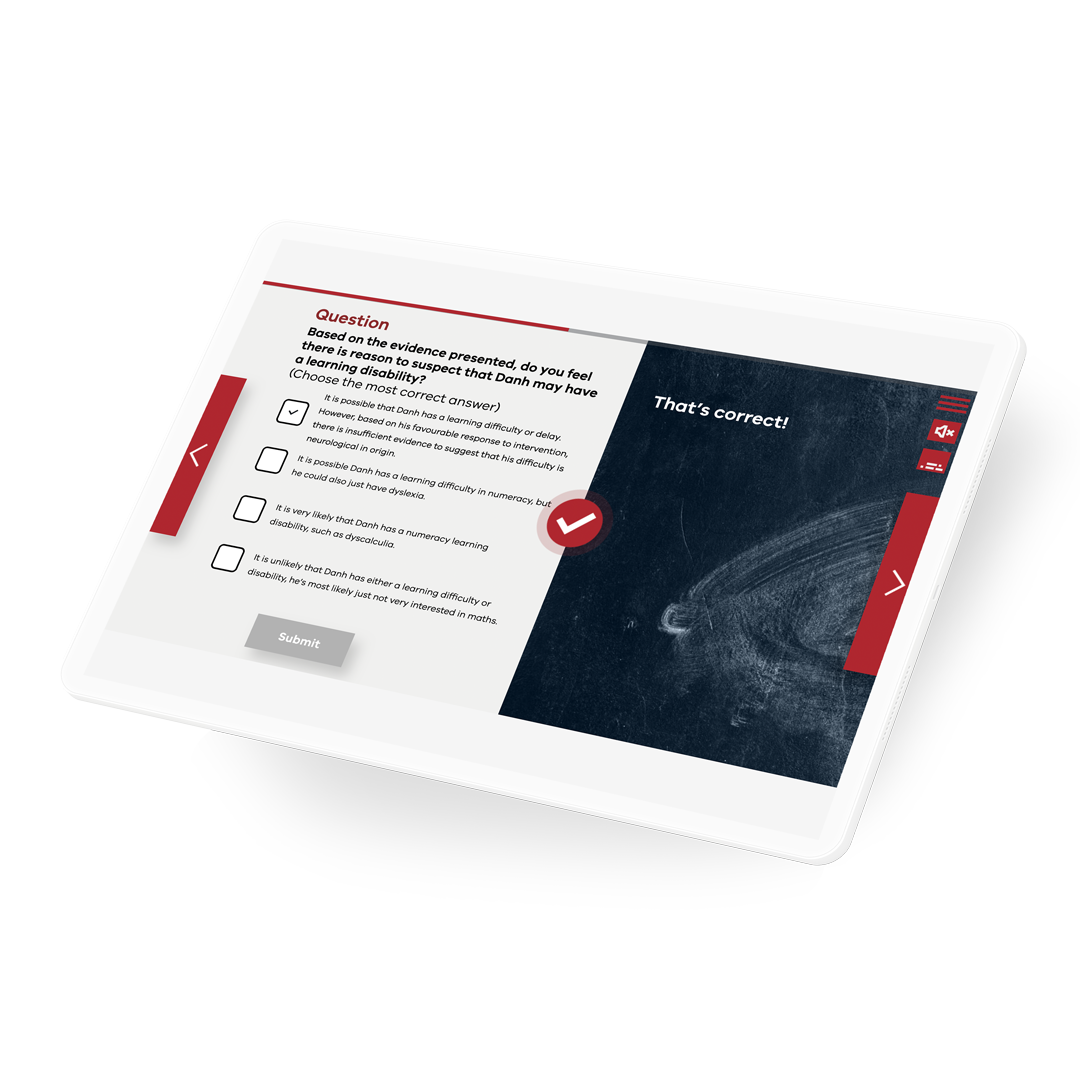




Helping to build the capability of Victorian teachers
The success of the four e-learning modules was determined by the teachers’ awareness-building, knowledge transfer, and mindset shifts.
imc was measured through a variety of e-learning engagement tools to enhance the learning experience. Through elements such as videos, simulations, meaningful quiz questions and a variety of other tools that formed part of the e-learning design solution, imc was able to create a bespoke suite of modules to aid the Department’s teachers.
The Department conducted a survey of 800 teachers and principals before and after the implementation of the course. The results of the survey showed that the courses had a high acceptance rate, meaning that they were highly successful in increasing teachers’ capabilities of assessing learning difficulties in numeracy among their students.

Moreover, developing the courses helped the teachers to improve their strategies for teaching students with learning difficulties.
imc and the Department were recognised as the Gold Award winners in the 2021 LearnX awards, in the category Best eLearning Initiative: Widespread Adopter. The international award program honours innovative and creative projects in the fields of learning and design every year.

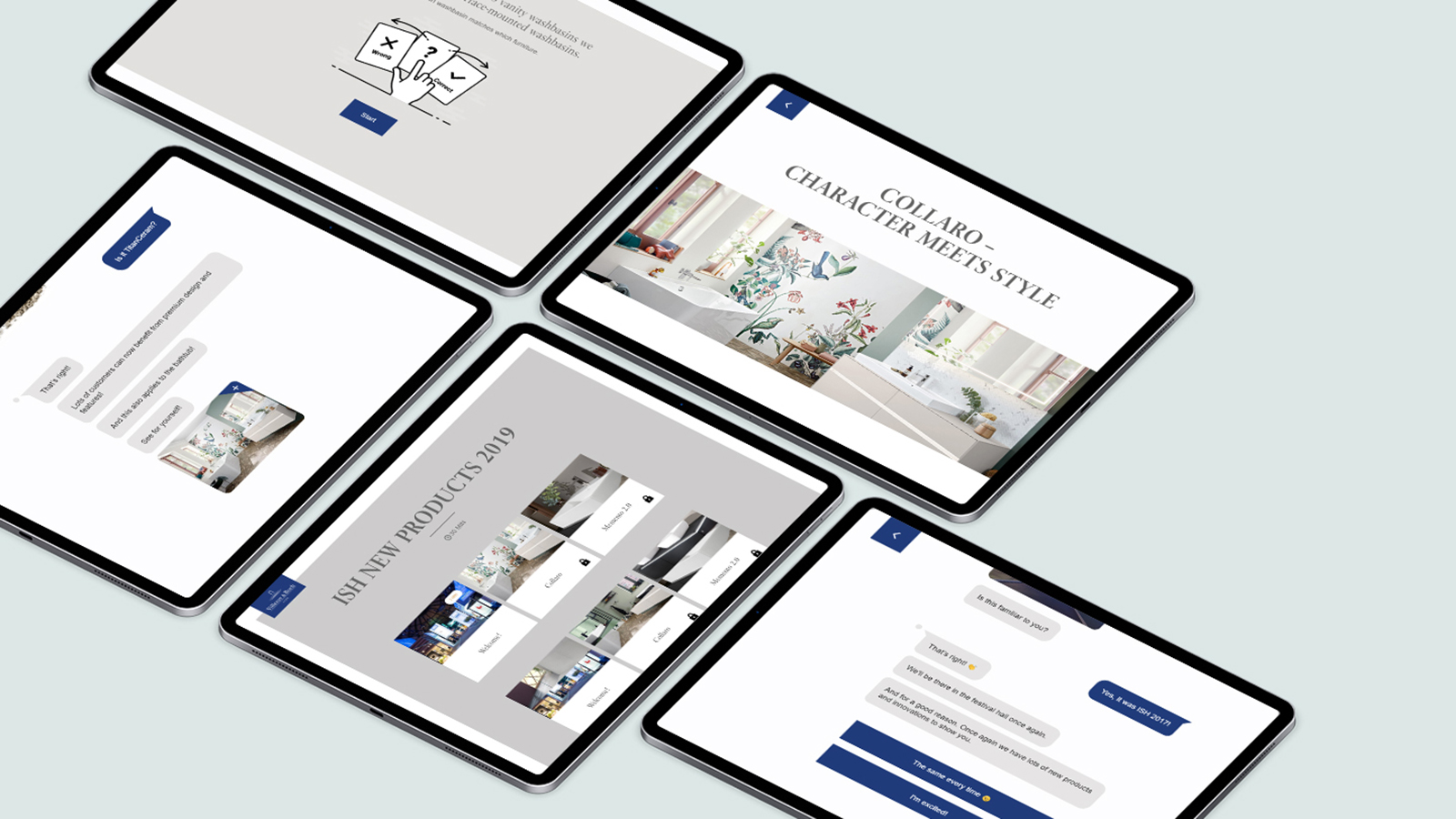
With chatbot and WBT to the
trade fair

Villeroy & Boch is one of the leading premium brands for ceramic products worldwide. Founded in 1748, the family business based in Mettlach, Germany stands for innovation, tradition and abundance of style.
As a renowned lifestyle brand, Villeroy & Boch has a presence in 125 countries with its bathroom, wellness and fine tableware products.
Fit for the leading trade fair
The ceramics manufacturer Villeroy & Boch needed to train around 400 sales representatives worldwide for a trade fair. Each employee attending the fair had to complete mandatory virtual product training so they would be able to present the new products.
The greatest challenges were:
- Time pressure: training had to be complete by a certain date
- Ensuring mandatory participation
- Subsequent testing of learning success
- Catering to different ages with different e-learning skills
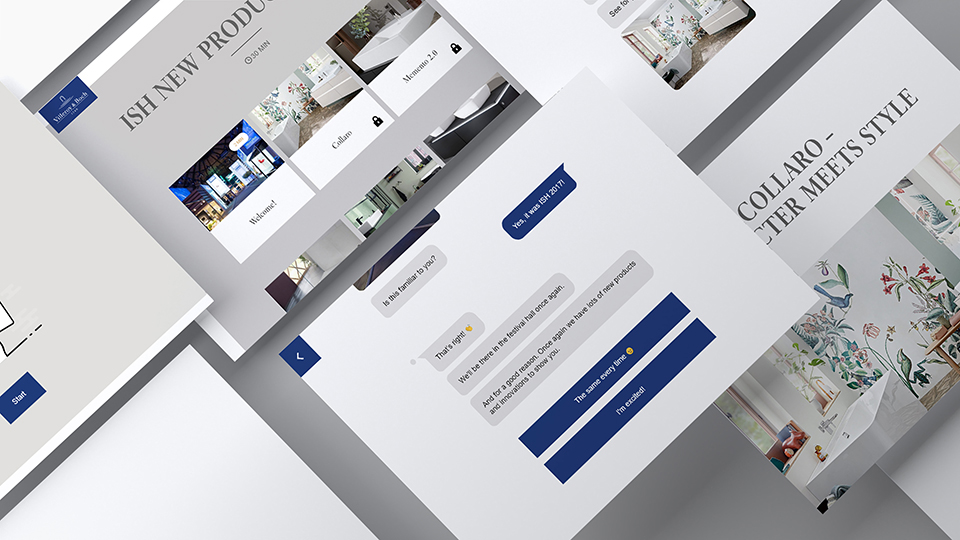
Virtual product training
Two different web-based training courses (WBT) were created for the predominantly technical products. For all other new developments a chatbot was developed.
The chatbot was filled with short learning units aka learning nuggets, each taking 3 minutes to complete. Each participant moved through different topic areas and product training units.
Each employee arriving for the trade fair was required to complete these training courses in advance and demonstrate in a test that they had understood the learned content.
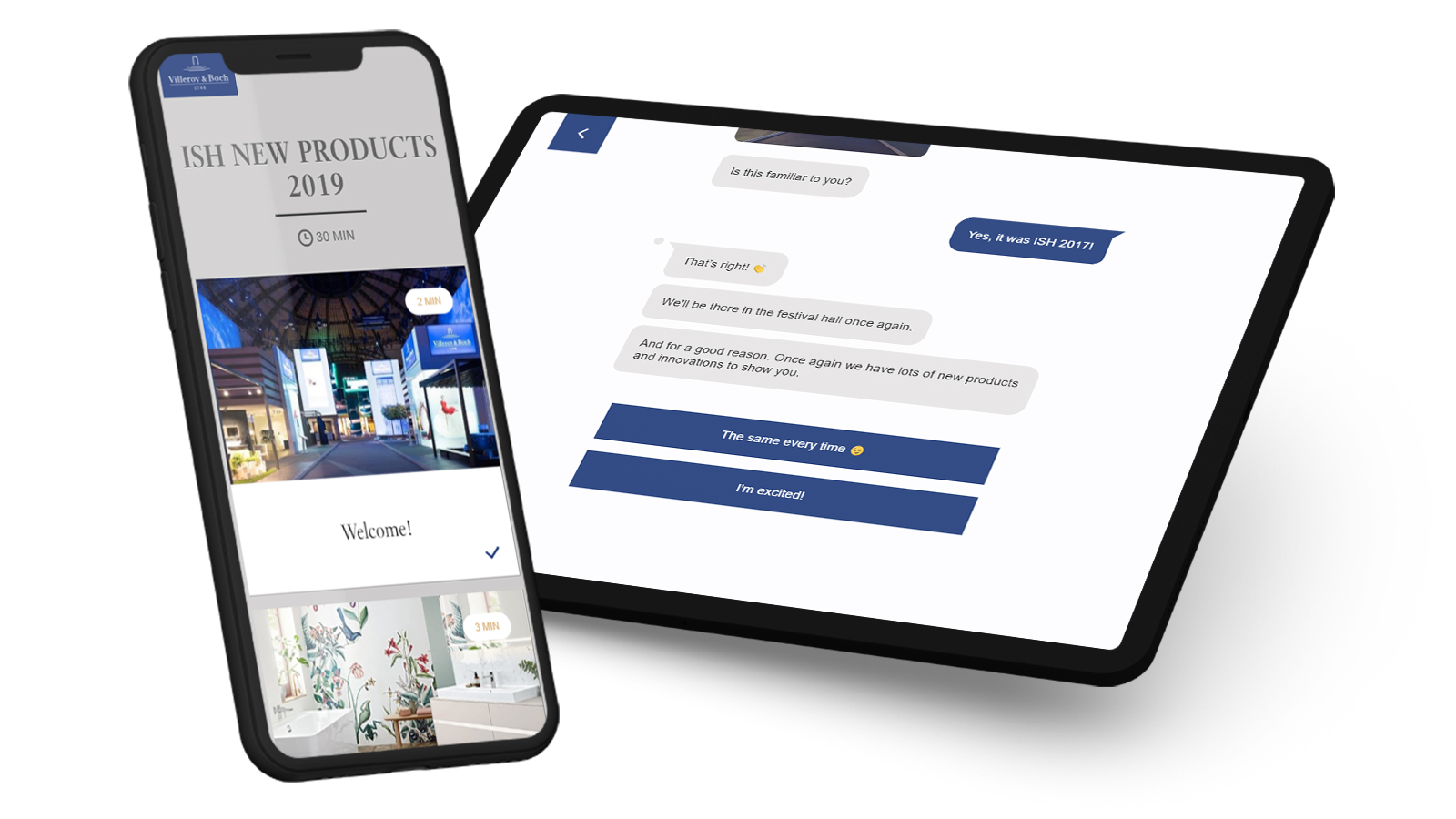
Delighted customers
The training received a strong response and achieved high levels of acceptance. Employees provided extremely positive feedback.
Villeroy & Boch therefore plan to work with equally innovative, digital training concepts for future trade fairs.

To watch this video, marketing cookies must be accepted. Click on the play button to accept. You can find more information in our cookie banner and in the privacy policy.


At the cutting edge with
blended learning

The Hager brand stands for straightforward and safe electrotechnical installations in residential, industrial and commercial buildings. The portfolio covers everything from energy distribution and cable routing through switch and building technology to door communication.
The Hager Group based in the Saarland town of Blieskastel is family-owned, looking back on 50 years of tradition. Thanks to its continuous development, the company now counts 11,400 employees worldwide.
Making role-based knowledge available
at short notice
At Hager, it is a known fact: Role-based knowledge must be available quickly and at short notice. To ensure this while also providing blended learning and gamification elements for independent electrical engineers, Hager was looking for a suitable partner.
When a new meter cabinet system was introduced all the way back in 1997, information had to be shared with customers almost immediately. Even in those days, the company took a step towards e-learning: Computer-based training (CBT) was recorded onto CD-ROMs and supplied with the products. A lot has happened since. CBT has become WBT. Learners are no longer provided with physical, tangible CD-ROMs on which knowledge is stored. Instead, clicking a link gives them access to the virtual training camp where up-to-date knowledge is transferred.
“Very clearly, the trend in e-learning is to quickly provide learners with role-based knowledge at relatively short notice,” explains Martin Zimmer, Online Training Advisor at Hager.

Instant availability, maximum scalability
and lower costs
Hager has been using the SaaS version of the imc Learning Suite learning management system since 2012. The cloud solution facilitates instant availability and enormous scalability while achieving significant cost savings compared to the traditional on-premise variant.
This learning environment provides learners with a lot more than just access to web-based training (WBT): They can also view webinar recordings or utilise interactive operating instructions in the form of smart lessons – anytime and from anywhere.
But why pick one if you can have it all? Hager leverages blended learning to inform independent electrical engineers about the company’s products. For this target group, imc and Hager have already produced four WBTs on topics such as “Lighting control and dimmers” or “Smart metering” – both of which are key content for energy efficiency.
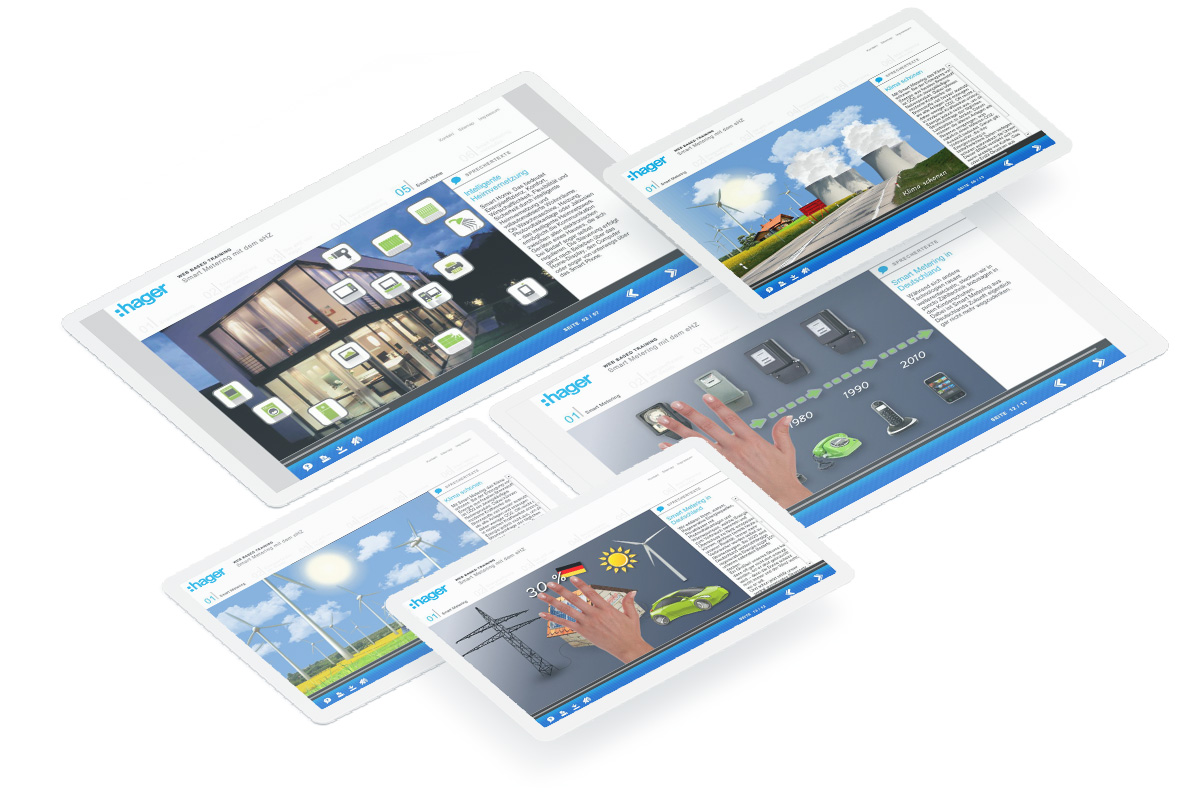
An effort well received by the learners
Always new WBTs, gamification elements and interactive training courses: The online learning opportunities are well-received by the learners. It shows in the high click rates, as well as in the satisfied feedback. “It’s safe to say: The more up-to-date a WBT is, the greater its acceptance,” Zimmer sums up the feedback.
“The training courses are becoming more sophisticated, and we use a range of interactive elements to communicate the learning content,” he continues. “Our efforts are appreciated!”
The latest web-based training develops know-how on modern cable routing and room connection systems in a playful way. Instead of old-fashioned question-and-answer tests, the partners leveraged realistic exercises in an appealing, virtual world. This training course is more like a serious game than a traditional WBT, and allows learners to compete against and challenge each other.

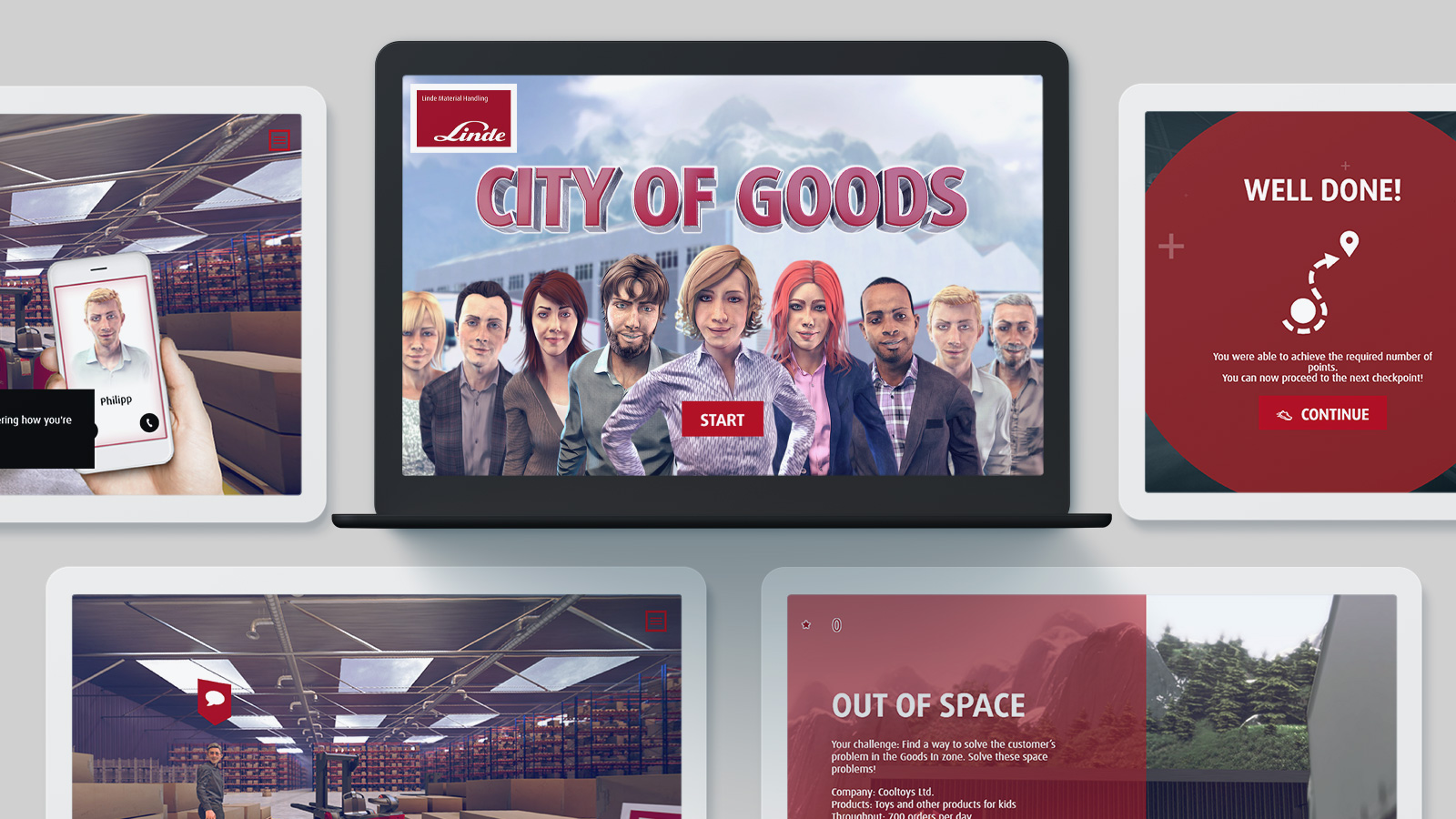
Two gold awards for
serious game

Linde Material Handling develops high-performance intralogistics solutions tailored to specific needs, enabling its customers to achieve long-term competitive advantages.
The company is one of the biggest forklift and warehousing equipment manufacturers in the world.
It has been setting the standard for industrial truck, fleet management, driver assistance system and service solutions for over 50 years. Linde has more than 13,000 employees worldwide.
Playful knowledge transfer
With its new, playful training, Linde Material Handling is pursuing two key goals: Transfer the necessary basic knowledge in the field of intralogistics to all colleagues worldwide, while raising awareness of challenges and improvement potentials in intralogistics among all employees.

A virtual learning environment in the
form of a serious game
The serious game “City of Goods” developed by imc is set in a distribution centre and structured in five training stations. The learner takes on the role of a new employee, receiving a virtual tour of the warehouse.
They gain an insight into different roles and challenges in the workplace, such as high rate of packaging errors, storage space problems or unsafe working conditions.
Each learning station comprises an entrance area, one or two rooms and an office. In the virtual learning environment, the learner communicates with colleagues and obtains first-hand information on the issues at hand and the areas that require action. The player earns points by finding the right solution. Once a certain number of points has been achieved, the player is given access to the office. Here, they must explain the solution they came up with and implemented, before earning a minimum number of points to successfully complete the station.
The game is presented in 3D to make the simulation as realistic as possible.
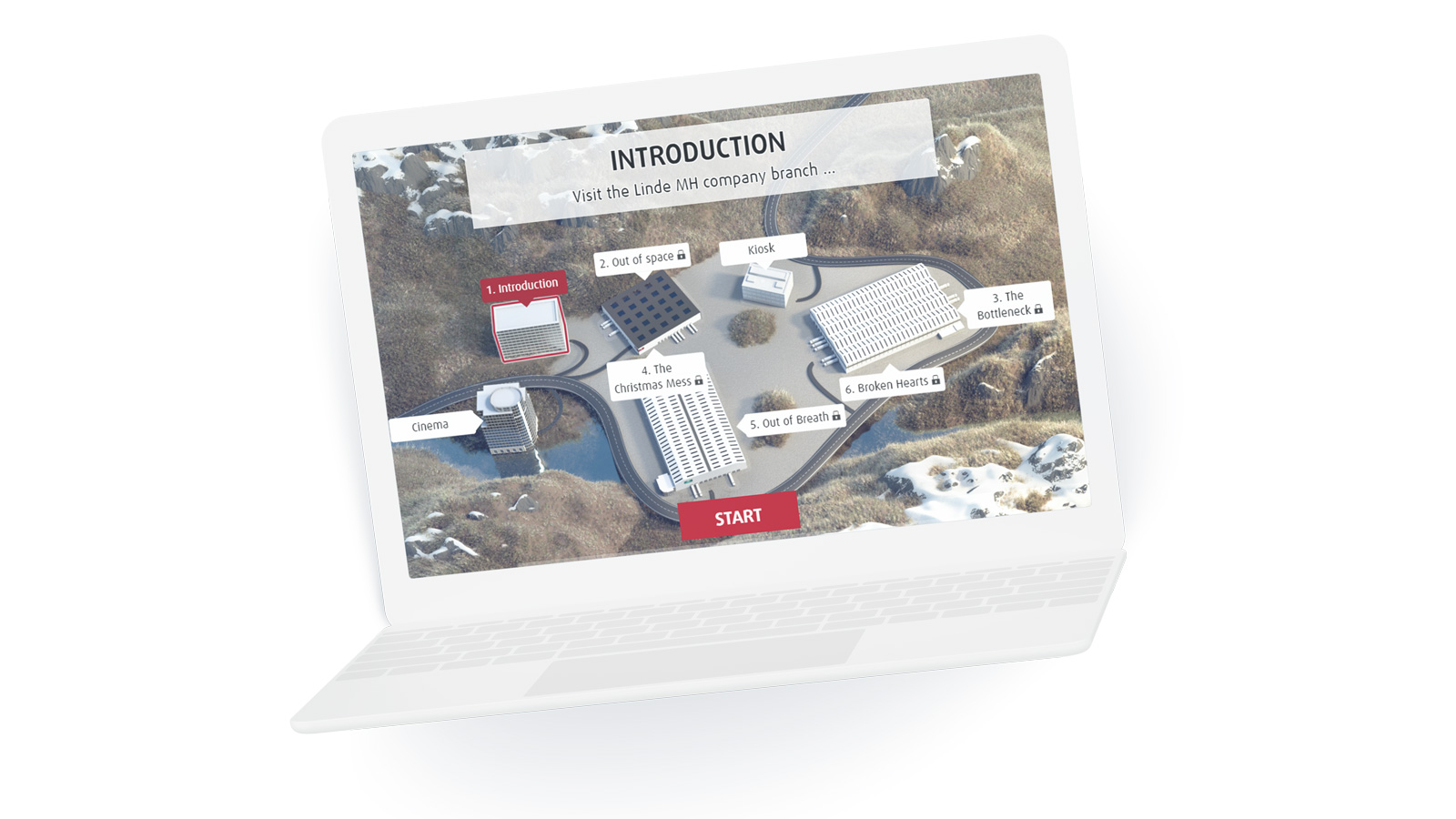
Gold for “City of Goods”
At the 20th World Media Festival in Hamburg, “City of Goods” scored not once, but twice: The jury of the Television & Corporate Media Awards honoured the serious game with an intermedia-globe Gold Award in the Learning Programmes category.
To top it off, Linde and imc received the Grand Award for best submission in a main category.
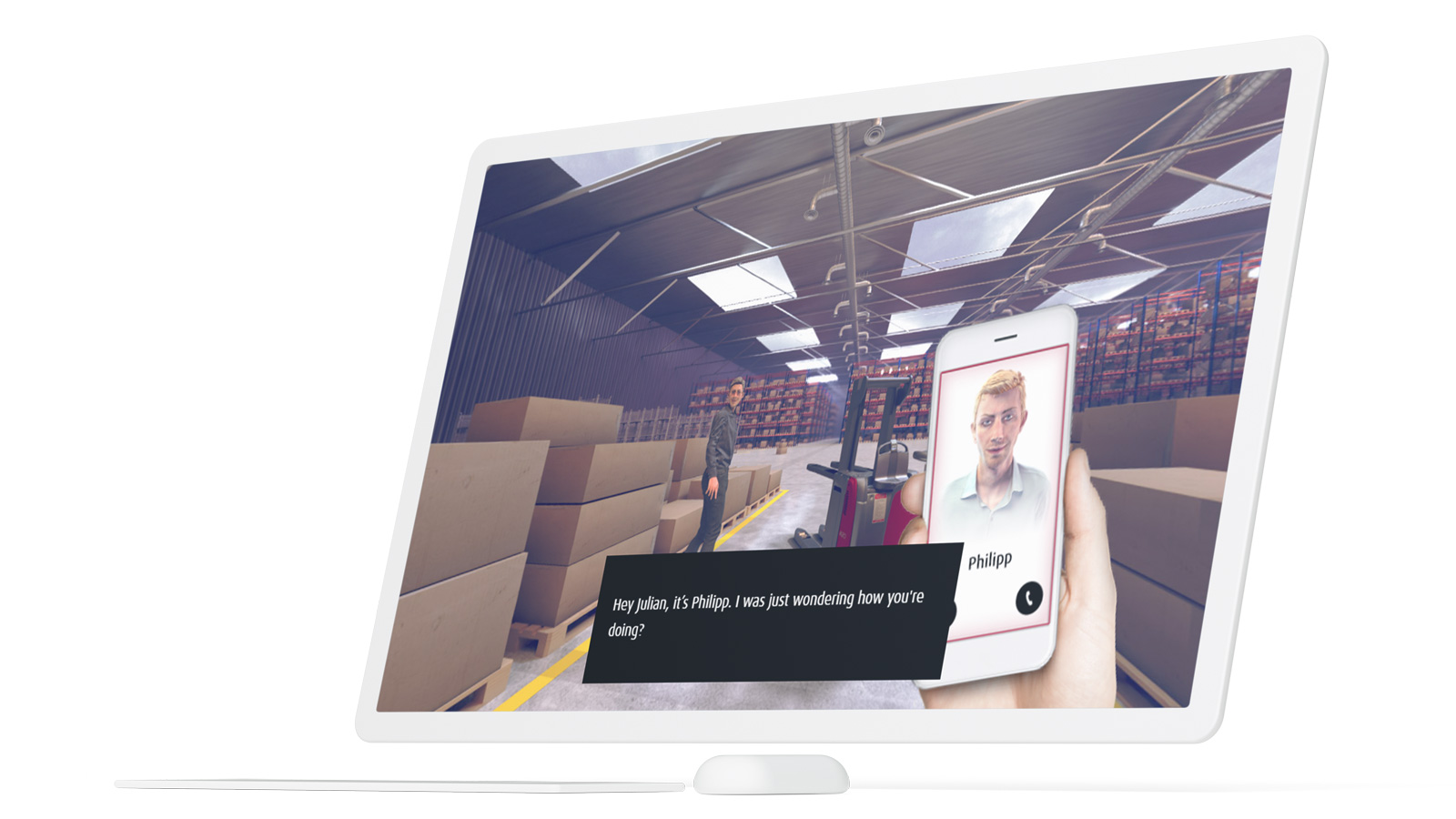
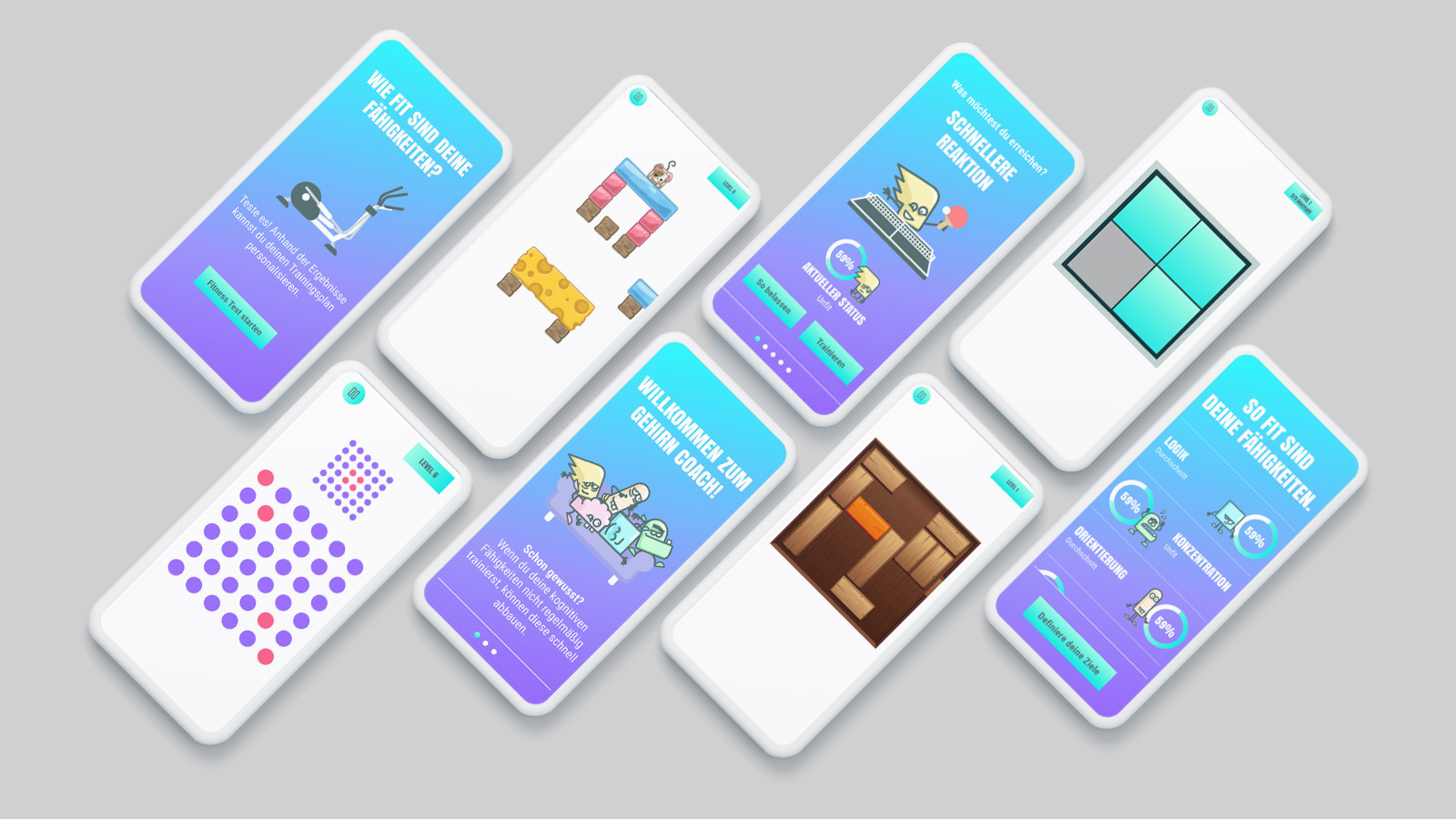
Get your grey matter in top form
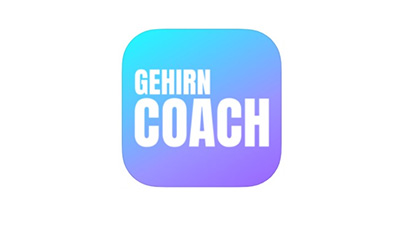
Brain cells always need new stimuli to stay fit. Together with the mobile communications provider Mobilcom-Debitel, we developed a brain jogging app which offers a personalised training plan to achieve that goal.
Logic, concentration, orientation, reaction and memory are trained with scientifically proven methods.
Exciting brain training for customers
Mobilcom-Debitel wanted to offer its customers a special feature for smartphones: a brain jogging app that trains the grey matter with scientifically proven methods. It was crucial that the app would be intuitive to operate to ensure users could get started without stumbling blocks.
The training goal was to spark the users’ ambition. Unlike many other apps, it was meant to respond to each customer’s individual requirements to facilitate an optimal challenge at all times. This aimed to make the app particularly efficient while also keeping training fun.

Uniform processes and time-savings
With “Gehirn Coach” ("brain coach"), the imc team developed a brain jogging app for smartphones that trains all five cognitive skills: logic, concentration, orientation, reaction and memory. The five skills are trained in different game formats.
To start off, the current status is determined with a fitness test. A personalised training plan is created based on the results. In addition, users can define their own priorities – for example, if they want to concentrate on memory training. After training, users can track their personal progress with the fitness tracker. User can see their fitness level in each skill, as well as their personal overall fitness in a special view for the current week, month or year.
“Gehirn Coach” was developed in collaboration with TU Kaiserslautern. The researchers investigated thought processes in depth, and conducted studies to optimise the effectiveness of the app. Thanks to usability and eye-tracking tests throughout the development, the app is intuitive to operate. Mobilcom-Debitel customers can add “Gehirn Coach” to their mobile phone contract as an optional extra, or download the app from the app store.
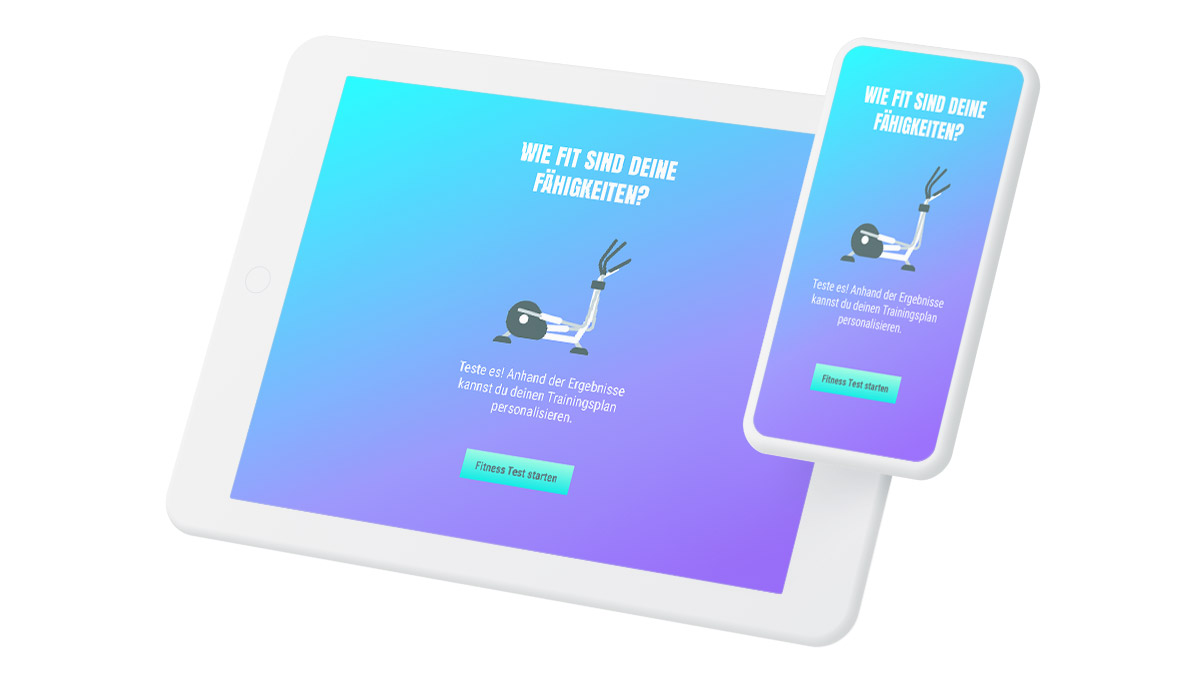
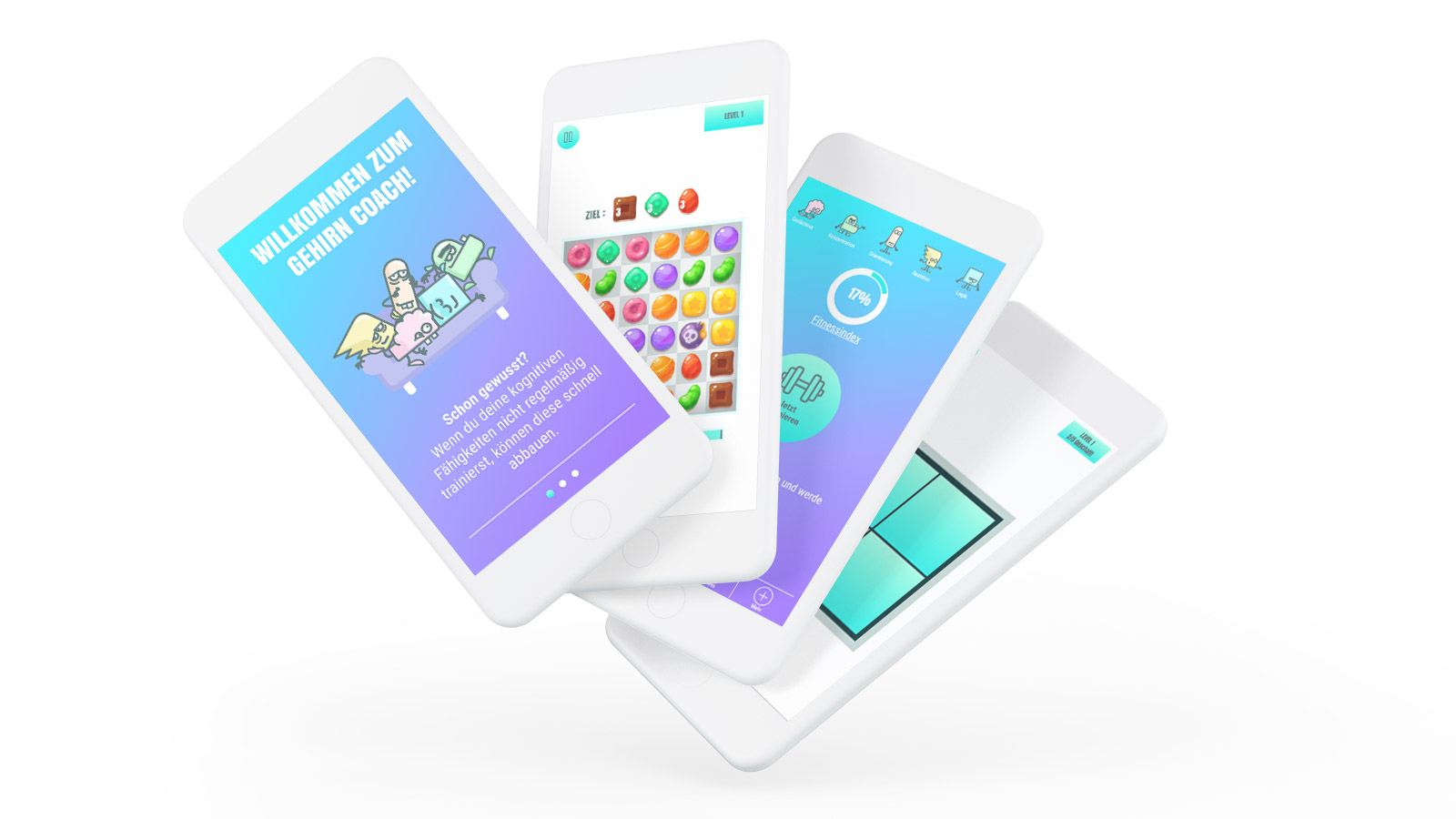
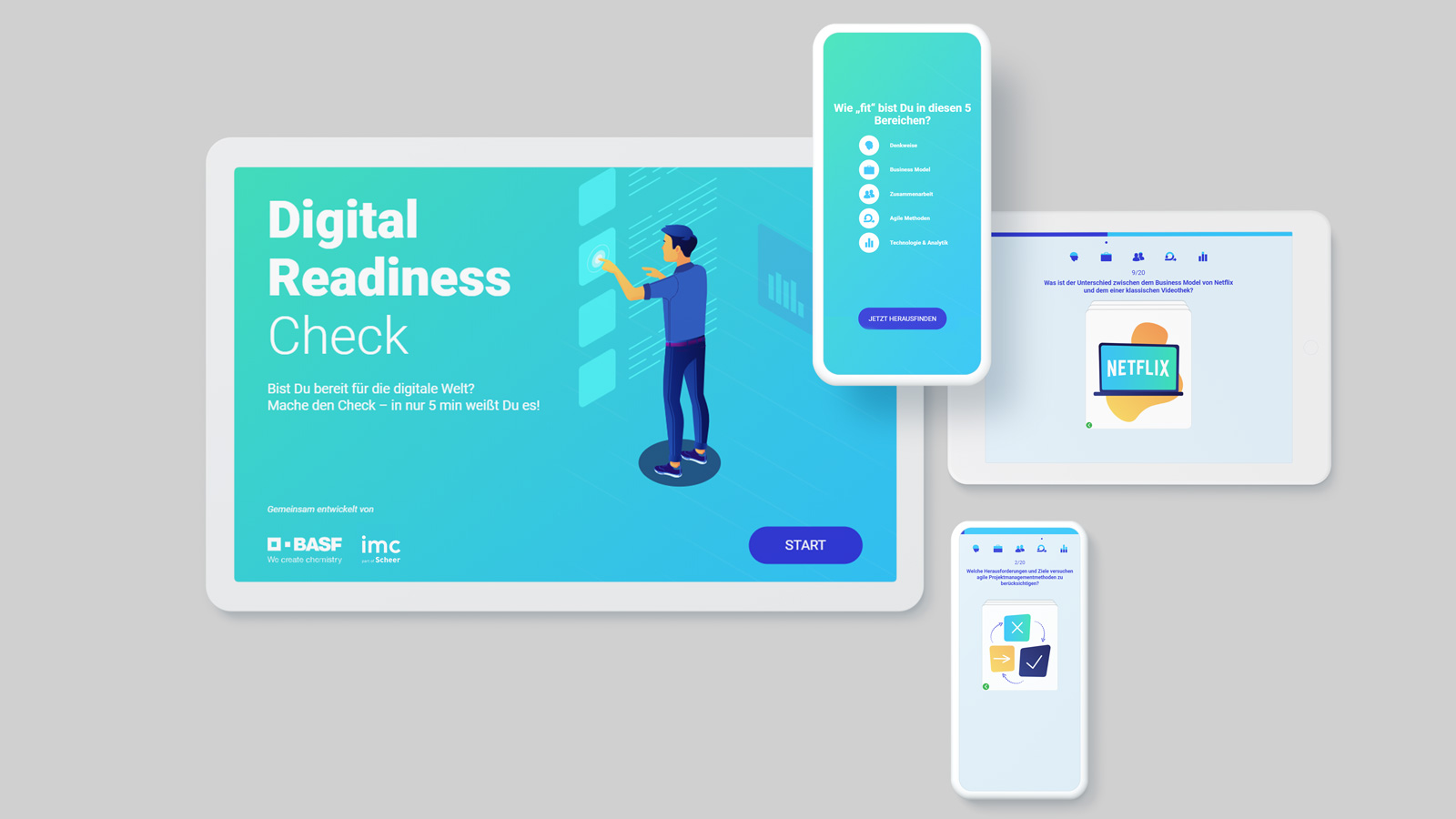
Are you ready for digitalisation?
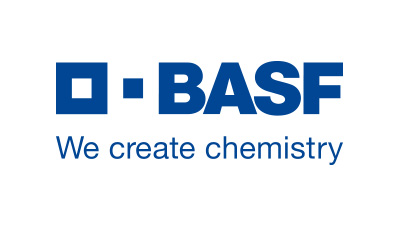
More than 117,000 employees in the BASF group strive to contribute to the success of their clients from virtually all sectors and almost all countries worldwide.
We have collated the portfolio in six segments: Chemicals, Materials, Industrial Solutions, Surface Technologies, Nutrition & Care and Agricultural Solutions.
In 2019, BASF achieved worldwide revenues of around EUR 59 billion.
Needs assessment for the
digitalisation strategy
The digital transformation is shaking up almost all business processes. It is both a challenge and an opportunity for companies. BASF has rolled out digitalisation training worldwide to upskill all employees. In the first instance, this involved finding out the degree of digital readiness among the workforce.
The goal was to go beyond a strict needs assessment and also give the employees the opportunity to test their own knowledge. Intuitive operation and time-efficiency were crucial requirements for the solution.

An assessment for all target groups
The digital readiness check is used to assess all target groups. Based on the test, subsequent professional development measures can be tailored to the users’ starting point.
The app can be accessed from all devices, and be used from the office computer or the mobile phone. The readiness check measured the user’s competence in five subject areas: mindset (growth or fixed), business models, collaboration, agile methods and technology & analytics.
Rather than testing knowledge based on abstract facts, the digital readiness check uses specific examples. That makes it easier for the user to transfer any new knowledge acquired to their daily life, and ensures that all employees understand the core of the questions.
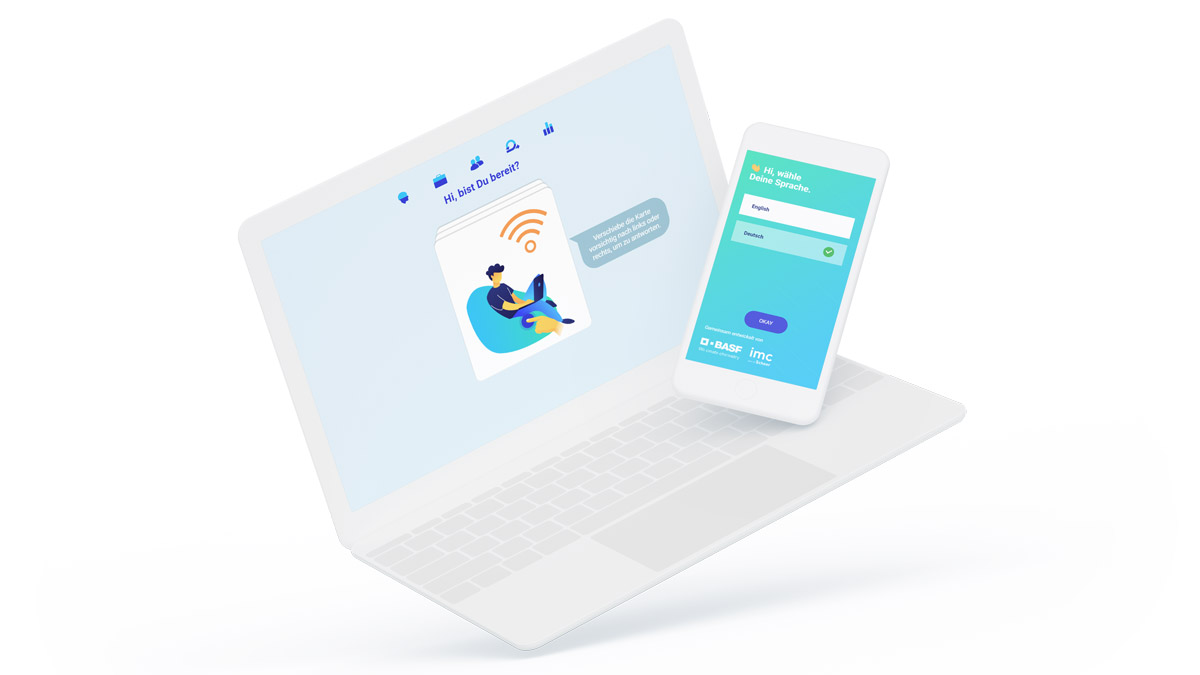
Kick-starting the transformation
The digital readiness check enabled the professional development organisers at BASF to quickly and clearly determine the standard of the employees’ digital education. Knowledge gaps were revealed and learning needs identified.
The test allowed employees to reflect on how much they actually know about digitalisation and digital work methods, and what else there was for them to discover. The readiness check therefore became the foundation for the subsequent group-wide education initiative aiming to enable all employees to utilise digitalisation for their own work in a smart way.
The digital readiness check is also available to the public at: https://basf.trainfordigital.com/

